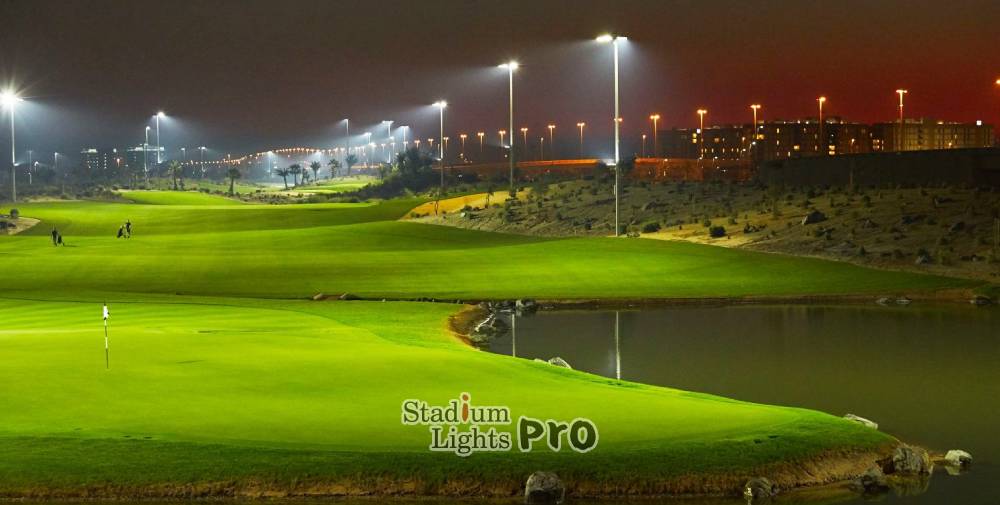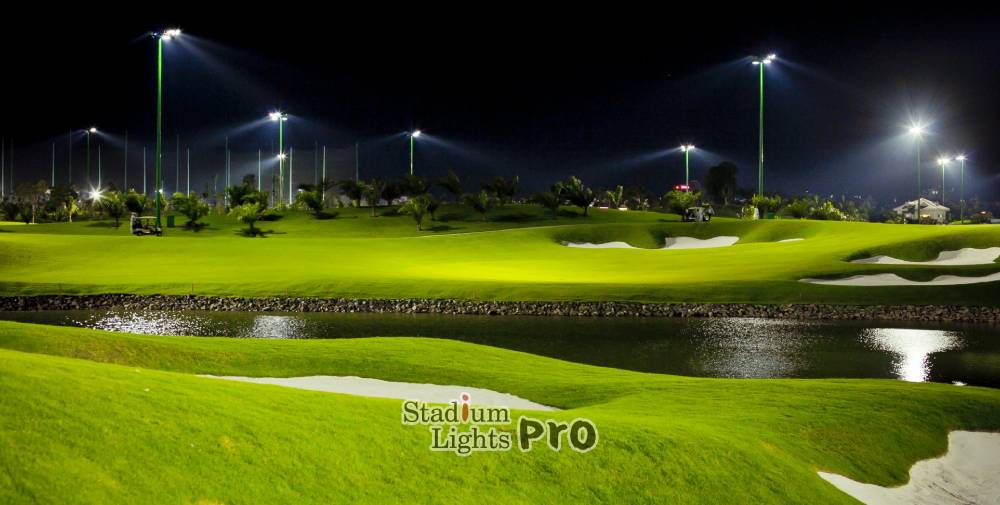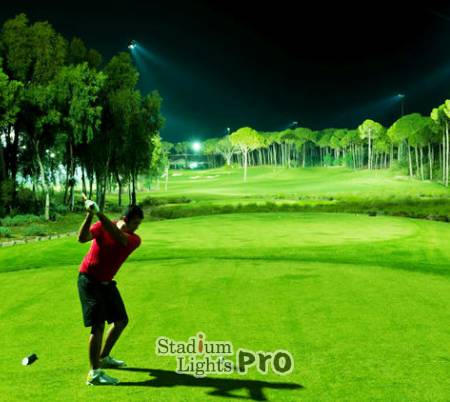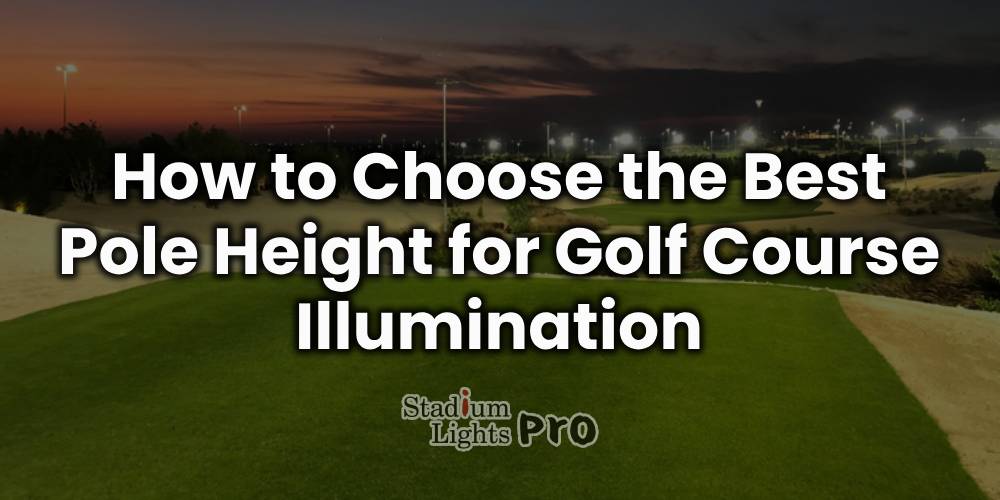When designing a lighting system for a golf course, one of the key considerations is the height of the poles used for illumination. The pole height directly impacts the overall quality of lighting, visibility, and safety on the course. By carefully selecting the right height, it is possible to achieve an optimal balance between adequate coverage and energy efficiency. Understanding the factors that influence pole height decisions is essential in creating a functional and aesthetically pleasing lighting system for golfers.
Table of Contents
ToggleUnderstanding Golf Course Lighting Needs
Golf course lighting serves several purposes, from improving visibility during night play to enhancing safety and ambiance. The lighting must cover a vast area with minimal shadows and glare, which can affect the players’ experience. A well-lit golf course allows players to continue enjoying the game long after the sun sets. The need for proper lighting is not just about illumination but also about providing a comfortable environment where players can focus on their game without distractions.

The Role of Lighting in Golf Course Design
Golf course lighting plays a role in both the design and functionality of the course. It allows players to see the fairway, greens, and hazards with clarity while avoiding overly bright or shadowed areas. Proper lighting ensures that players do not struggle with visibility while moving through different sections of the course. The lights should create an atmosphere that enhances the playing experience, making it more enjoyable and seamless as day turns into night.
Factors That Influence Pole Height Selection
Choosing the right pole height for a golf course’s lighting system is not a simple decision. Several key factors must be considered to ensure the poles provide sufficient illumination while also contributing to the aesthetics and functionality of the course. These factors include the type of course, the layout and design of the golf course, the specific areas that need to be illuminated, the level of play, and the lighting technology being used. Each of these elements directly impacts the overall lighting design, pole placement, and the effectiveness of the illumination provided. Taking all these aspects into account helps ensure that the final lighting system delivers the right balance between coverage, efficiency, and cost-effectiveness.

Course Layout and Design
The layout and design of the golf course play a pivotal role in determining the height of the lighting poles. Golf courses come in a variety of designs, from expansive, open layouts to more compact, winding courses with intricate features. The shape and size of the course affect how far and how evenly the light needs to spread. A course with large, open spaces, such as a traditional links-style course, generally requires taller poles to cast light across the expansive fairways and greens. These taller poles allow for the use of wider, more powerful lights that can reach the farthest corners of the course, ensuring even coverage and minimizing dark spots.
Conversely, courses with smaller, more confined spaces or those that feature a lot of natural landscaping, such as trees, water features, and hazards, may benefit from shorter poles. These poles help to avoid light spillover into surrounding areas, ensuring that only the desired areas are illuminated. Additionally, shorter poles can help control shadows and prevent the lighting from being too harsh. For example, holes with narrow fairways and abundant tree cover may require more targeted lighting that can be effectively provided with shorter poles placed at strategic points. The poles need to be adjusted not only based on the size of the course but also on the specific features of the design that need more concentrated illumination.
| Course Area | Recommended Pole Height | Lighting Purpose |
|---|---|---|
| Tees and Fairways | 25 to 35 feet | Provides uniform, extensive lighting coverage to ensure consistent visibility across long stretches of land. |
| Greens | 15 to 25 feet | Offers moderate lighting to enhance visibility of slopes, distances, and contours without causing glare. |
| Hazards (Bunkers, Water Features) | 15 to 25 feet | Accentuates the features of hazards like sand traps and water features while preventing over-illumination. |
| Paths and Walkways | 10 to 15 feet | Provides localized, subtle lighting for safety and navigation without disturbing the overall course lighting. |
| LED Lighting (General) | 20 to 30 feet | Allows even distribution of light with minimal glare and shadows, suitable for energy-efficient lighting systems. |
| Traditional Lighting Systems (e.g., Metal Halide, Sodium Lights) | 15 to 25 feet | Ensures even coverage without harsh contrasts, though less efficient than LED systems. |
Area of Illumination
Different sections of a golf course have varying lighting needs. The areas of the course that require illumination directly impact the decision on pole height. For instance, the tees, fairways, and greens, which are the main areas of play, often require higher poles for a broader, more uniform spread of light. These areas are typically the largest sections of the course and demand the most consistent illumination. Higher poles, ranging from 25 to 35 feet, can cover long stretches of land and help to minimize shadows, ensuring that players can see the course clearly while preparing their shots. Higher poles can also reduce the need for excessive fixtures, providing more efficient coverage with fewer lights.
On the other hand, other areas like paths, bunkers, and water features may require more focused lighting to draw attention to these elements without overpowering the surrounding areas. Shorter poles in the range of 15 to 20 feet are often sufficient for these types of lighting needs. Bunkers, for example, benefit from concentrated, lower lighting to highlight the contours of the sand and enhance visibility for players. Similarly, water features such as ponds or lakes might need spotlights or low-mounted lights that can reflect off the water, creating an appealing and functional lighting effect. The combination of taller poles for the larger sections of the course and shorter poles for specialized areas provides a well-rounded lighting strategy.
Golf Course Usage and Frequency of Night Play
 The frequency and intensity of night play is another determining factor when selecting pole height. Some golf courses are used for occasional night play, while others may host regular evening events, tournaments, or night-time leagues. For a course that is used more frequently during the evening, the lighting system must be designed to ensure high visibility, without causing glare or discomfort to players. In such cases, higher poles may be necessary to create uniform lighting coverage across the course. Taller poles help spread light over larger areas, reducing the chances of areas being left too dark or causing uneven illumination that can negatively impact the game.
The frequency and intensity of night play is another determining factor when selecting pole height. Some golf courses are used for occasional night play, while others may host regular evening events, tournaments, or night-time leagues. For a course that is used more frequently during the evening, the lighting system must be designed to ensure high visibility, without causing glare or discomfort to players. In such cases, higher poles may be necessary to create uniform lighting coverage across the course. Taller poles help spread light over larger areas, reducing the chances of areas being left too dark or causing uneven illumination that can negatively impact the game.
On the other hand, a golf course with limited night play may not require as high a pole height. A lower pole can still provide sufficient light without the need for widespread coverage, making the lighting system more cost-effective. In this scenario, the focus can be placed on lighting the areas that are most frequently used during the night, such as the first few holes or key features, without over-illuminating the entire course. Additionally, courses that host tournaments or large events might require specialized lighting setups, potentially necessitating higher poles to ensure that all areas of the course are adequately illuminated for players, spectators, and media coverage. These considerations help to strike the right balance between adequate lighting and efficient energy usage.
Ultimately, a golf course’s usage and the volume of night play will influence how much lighting is needed and how high the poles should be. Courses with regular night-time activity will need higher poles and more extensive lighting systems, while those with limited night play may benefit from shorter poles and a more targeted lighting approach. Understanding the frequency of night play and adjusting the pole height accordingly helps maintain a comfortable and safe environment for players, while also managing energy and maintenance costs.
Choosing the Right Pole Height for Different Areas of the Course
Every section of a golf course has its own unique lighting needs, and each requires a different pole height to ensure optimal illumination. The height of the poles directly affects the quality of lighting in different areas, which ultimately impacts the overall playing experience. The function of each section of the course—whether it be the tee, fairway, greens, or walkways—determines the type of lighting required. Understanding these needs and the layout of the course is essential in selecting the right pole height for each area to achieve effective and efficient lighting.
Tees and Fairways
Tees and fairways are typically the largest areas on a golf course, and they require the most uniform and extensive lighting coverage. These areas are primarily used for the players’ tee shots and initial approach, so consistent visibility across long stretches of land is essential. Taller poles, ranging from 25 to 35 feet in height, are often the ideal choice for these areas. The higher the poles, the wider the coverage of light, which ensures that the entire playing area, from the tee box to the middle of the fairway, is evenly illuminated. The key here is to minimize shadows and allow players to clearly see the fairway and any obstacles that may lie ahead, which helps them better plan their next move.
In areas where the fairway stretches across a large, open space, taller poles can prevent uneven lighting, which could cause areas of darkness or glaring lights that could interfere with the game. A properly illuminated fairway allows players to maintain a continuous flow of play without being interrupted by poor visibility, especially during night play or in low-light conditions.
Greens and Hazards
The greens and hazards are integral parts of the golf course that require specific lighting arrangements to enhance visibility while preventing excessive glare or harsh contrasts that could affect players’ precision. The greens, where golfers aim to sink their shots, need to be lit carefully to ensure that players can judge distances, slopes, and the contours of the putting surface. To achieve the right balance of light intensity and shadow control, poles in these areas are usually set at a moderate height, typically ranging from 15 to 25 feet.
This height is sufficient to cast light over the greens without creating unwanted light spill into adjacent areas. For instance, bright light spilling onto the surrounding grass or surrounding trees could distort the visual experience and make it harder for players to focus on their shot. The moderate pole height ensures that the lighting is controlled and focused specifically on the green area, creating a sharp, well-lit target for players to aim for.
Hazards such as bunkers, water features, and rough areas also benefit from careful lighting. Poles in these areas can be set slightly lower than those for the fairways but still require careful placement. Lighting these hazards effectively is important not only for player safety but also for the aesthetic appeal of the course. Proper lighting ensures that hazards like sand traps and water features are highlighted clearly but not overpoweringly, allowing golfers to navigate them without being distracted by too much light. Lighting these areas helps accentuate their features while maintaining the overall atmosphere of the course.
Paths and Walkways
Paths and walkways, though often less central to the game itself, are nonetheless critical for the safety and convenience of golfers. These paths are the routes golfers take when moving between different holes, and ensuring they are well-lit is important for safety, especially during night play. Lighting along walkways needs to be subtle and focused to create a comfortable, navigable path without interfering with the overall illumination of the course. Typically, shorter poles ranging from 10 to 15 feet are ideal for these areas, as they provide localized lighting without spilling light into the surrounding areas.
The lower poles cast a softer, more intimate light along the path, which helps guide players from one hole to the next while preserving the quiet and calm atmosphere of the course. By placing the lights closer to the ground, the lighting remains more concentrated and reduces the likelihood of light spillage that could disrupt the play area. Additionally, the lower poles are less intrusive, blending into the environment and ensuring that they don’t interfere with the game by creating unnecessary distractions or bright spots.
Proper illumination along these paths also plays a vital role in preventing accidents. With clearly lit paths, golfers are able to navigate the course safely in the dark, avoiding tripping or stumbling while walking between holes. This thoughtful placement of low-mounted poles enhances the overall experience for golfers, making their time on the course safer and more enjoyable.
Lighting Technology and Pole Height Compatibility
The type of lighting technology used on the golf course can also impact the choice of pole height. Different lighting systems vary in terms of their reach and intensity. Understanding how these systems perform at various pole heights can help in selecting the right setup for a golf course’s needs.
LED Lighting Systems
LED lighting is becoming increasingly popular for golf course illumination due to its energy efficiency and longer lifespan. LED lights are often brighter and can be placed higher up on poles without creating excessive glare or hotspots. Typically, LED systems work well with pole heights ranging from 20 to 30 feet, depending on the size of the area to be illuminated. The higher pole height allows the LEDs to provide a wide, even distribution of light, minimizing shadows.
Traditional Lighting Systems
Traditional lighting systems, such as metal halide or high-pressure sodium lights, are less efficient than LEDs and require careful planning to achieve even coverage. These systems typically work best with poles ranging from 15 to 25 feet, as the lights are not as focused as LEDs. The poles should be placed at a height that allows the light to spread evenly across the area without creating harsh contrasts or areas of darkness.
Energy Efficiency and Maintenance Considerations
Another factor in choosing pole height is energy efficiency and maintenance. Taller poles typically require more lighting fixtures to achieve uniform coverage, which can increase energy consumption and maintenance costs. Lower poles may be more energy-efficient, but they might require more fixtures to cover the same area. Finding the balance between the right pole height and the number of fixtures needed to illuminate the course effectively is an important consideration for golf course operators.
Energy Savings with Modern Lighting Systems
Modern lighting systems, particularly LEDs, offer significant energy savings compared to traditional systems. By choosing the right pole height and strategically placing the fixtures, golf course operators can reduce energy consumption while still achieving sufficient illumination. LED lights consume less power and last longer, which can lower both energy bills and the frequency of maintenance checks.
Final Thoughts on Golf Course Lighting Pole Height
Choosing the best pole height for golf course lighting involves balancing several factors, from the layout and design of the course to the type of lighting technology used. The right pole height ensures that the course is well-lit, providing a comfortable and enjoyable experience for players. It also helps to improve safety and the overall ambiance of the course, making night play more feasible and enjoyable. With careful planning and attention to detail, golf course operators can create an effective lighting system that enhances both the functionality and aesthetic appeal of the course.

